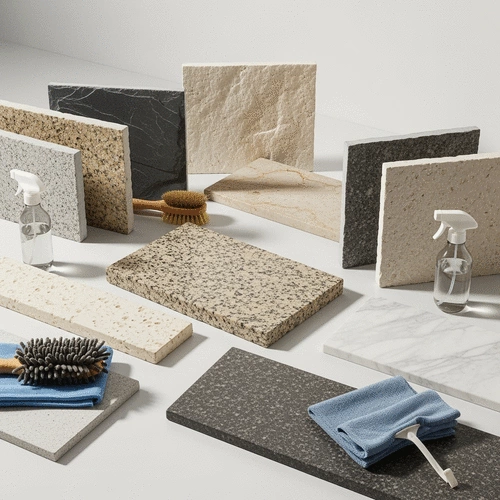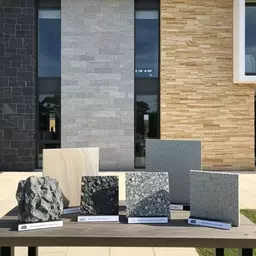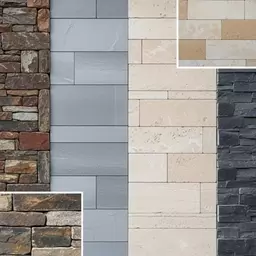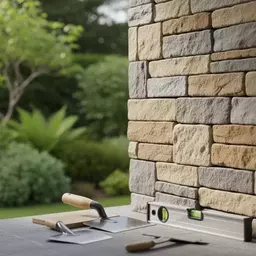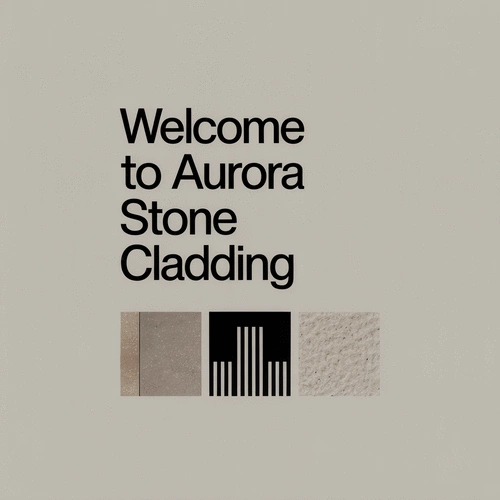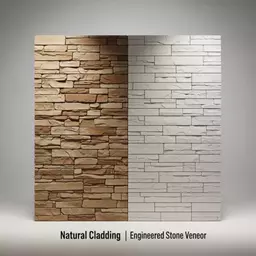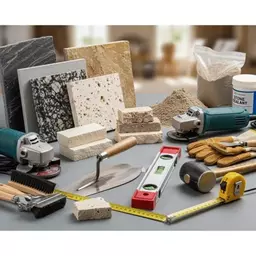When it comes to maintaining the elegance of your stone cladding, understanding the nuances of different materials and cleaning methods is essential. Let's explore some key insights that will empower you to keep your stone surfaces looking their best.
What You Will Learn
- Distinguish between natural and manufactured stone cladding, each with its unique maintenance needs.
- Identify the characteristics of popular stone types like granite, marble, and limestone, ensuring informed choices for cleaning techniques.
- Understand the importance of using pH-neutral cleaners to prevent damage to stone surfaces.
- Recognize signs that indicate when professional cleaning services are necessary, ensuring the longevity of your stone cladding.
- Explore eco-friendly cleaning solutions that are safe for both your stone and the environment.
- Learn effective step-by-step cleaning procedures to maintain your stone's beauty and avoid costly repairs.
Understanding Stone Cladding: Natural vs. Manufactured & Porosity
This visual highlights the key characteristics of natural versus manufactured stone cladding and the crucial distinction between porous and non-porous stones, guiding informed maintenance choices. For a deeper dive into the types and differences, check out our article on natural vs. engineered stone cladding.
Natural Stone: Unique & Durable
- •Unique textures & colors (granite, marble, limestone, slate)
- •Inherent beauty and durability
- •May require more maintenance due to porosity
Manufactured Stone: Consistent & Versatile
- •Engineered for consistency; lightweight
- •Often mimics natural materials at lower cost
- •Generally easier to maintain
Porous Stones: Higher Maintenance
- •Absorb water & stains easily (e.g., Limestone)
- •Require frequent sealing & specialized cleaning
Non-Porous Stones: Easier to Clean
- •Resist moisture & stains (e.g., Granite)
- •Easier to clean & maintain
A Comprehensive Guide to Cleaning Different Types of Stone Cladding
Maintaining the beauty of your stone cladding is key to ensuring its longevity and appeal. At Aurora Stone Cladding, we understand that keeping your stone surfaces in pristine condition can be a bit daunting. But don't worry! This comprehensive guide will walk you through various cleaning techniques tailored for different types of stone cladding, helping you make informed choices.
Let’s dive into the world of stone cladding and explore the best practices for keeping your surfaces looking stunning!
Understanding Stone Cladding: Types and Characteristics
Overview of Common Stone Cladding Materials
When it comes to stone cladding, there are two main categories: natural stone and manufactured stone. Each type offers its own unique benefits and aesthetic appeal. Natural stones, like granite and marble, have inherent beauty and durability. On the other hand, manufactured stones provide a versatile option that often mimics natural materials without the hefty price tag.
- Natural Stone: Unique textures and colors; includes granite, marble, limestone, and slate.
- Manufactured Stone: Engineered for consistency; lightweight and often less expensive.
Choosing between these materials largely depends on your project's needs, desired look, and maintenance capabilities. Understanding the characteristics of each will empower you to select the best option for your home or project. For those interested in deeper maintenance insights, refer to our natural stone cladding care tips.
Natural Stone vs. Manufactured Stone
Natural stone is renowned for its beauty and unique patterns, often formed over millions of years. However, it may require more maintenance due to its porous nature. In contrast, manufactured stones are designed with consistency in mind and are often easier to maintain, making them a popular choice for many homeowners.
Popular Stone Types: Granite, Slate, Limestone, Sandstone, and Marble
Each type of stone has its own set of characteristics:
- Granite: Extremely durable, perfect for high-traffic areas.
- Slate: Offers a rustic look, often used for indoor and outdoor applications.
- Limestone: Soft and porous, requires regular sealing and maintenance.
- Sandstone: Known for its warm hues, but can be prone to wear.
- Marble: Elegant and timeless, though sensitive to acidic cleaners.
Each stone type presents unique cleaning needs, so let’s make sure we cover how to care for them effectively!
Understanding Porous vs. Non-Porous Stones in Cladding
Understanding whether your stone is porous or non-porous is crucial for maintenance. Porous stones absorb water and stains more easily, requiring more frequent sealing and specialized cleaning techniques. In contrast, non-porous stones resist moisture and stains, making them easier to clean and maintain.
Knowing this distinction will help you choose the right cleaning products and techniques, ensuring your stone cladding remains beautiful for years to come!
General Cleaning Procedures for Stone Cladding
Once you've chosen the right type of stone cladding for your project, it's essential to establish a cleaning routine that keeps your surfaces looking their best. Regular cleaning not only enhances the appearance of your stone but also protects it from damage.
Essential Tools and Cleaning Products
The right tools and products are vital to achieving the best results. Here are some essential items you should have on hand:
- pH-neutral cleaners: Gentle on stone surfaces, effective in removing dirt.
- Non-abrasive sponges: Ideal for preventing scratches while cleaning.
- Soft-bristle brushes: Perfect for scrubbing without damaging the stone.
- Power scrubbers: Great for tougher stains but should be used with caution.
Using these tools will ensure that your cleaning efforts are both effective and safe for your stone cladding!
Choosing pH-Neutral Cleaners for Safe Use
Always opt for pH-neutral cleaners to avoid damaging your stone surfaces. These products are specifically formulated to clean without causing harm to the natural properties of your cladding. Remember, harsh chemicals can lead to discoloration and degradation over time.
Non-Abrasive Cleaning Tools: Sponges, Soft Brushes, and Power Scrubbers
Using non-abrasive tools is crucial to maintaining the integrity of your stone. Sponges and soft brushes allow you to clean effectively without scratching or damaging the finish. If you decide to use power scrubbers, make sure to test them on a small, inconspicuous area first!
Step-by-Step Cleaning Process
Cleaning your stone cladding can be straightforward when following a step-by-step approach. Here’s how to do it effectively:
Preparing the Area for Cleaning: Importance of Surface Preparation
Before you start cleaning, it's important to prepare the area. This includes removing any furniture, plants, or decor that may obstruct your access to the stone surfaces. Additionally, sweeping away loose dirt and debris will make the cleaning process more efficient.
Executing the Cleaning Technique: Effective Methods for Dirt and Stain Removal
Begin by applying your pH-neutral cleaner to the stone surface, allowing it to sit for a few minutes to break down grime. Use your non-abrasive sponge or soft brush to gently scrub the area in circular motions. Rinse thoroughly to remove all cleaning residue!
Rinsing and Drying Techniques for Optimal Results
After scrubbing, rinse the surface with clean water to ensure no cleaning solution remains. For best results, dry the stone with a soft towel to prevent water spots or streaks. This step is crucial, as it helps maintain the beauty of your stone cladding.
By following these guidelines, you can ensure your stone cladding looks vibrant and well-maintained. Stay tuned for material-specific cleaning tips in the next section!

Did You Know?
According to recent studies, improperly maintained stone surfaces can lose up to 50% of their original luster and durability within just five years. Regular cleaning and maintenance not only enhance the aesthetic appeal but also extend the lifespan of your stone cladding.
Making Informed Choices: DIY vs. Professional Cleaning
When it comes to cleaning your stone cladding, you might wonder whether to tackle it yourself or bring in the professionals. This decision can depend on several factors, including the type of stone, the level of staining or dirt, and your own comfort with cleaning techniques. Let’s delve into when you should consider calling in the experts!
When to Call in the Experts: Signs You Need Professional Help
There are times when a professional touch is required. After all, stone cladding can be delicate, and making the wrong move could lead to even more damage. Here are some signs you might need to call in the pros:
- Persistent stains that won't budge despite your best efforts
- Large areas of dirt buildup that require specialized equipment
- Structural issues, such as loose stones or cracks
- High ceilings or hard-to-reach areas that need a more thorough clean
If you notice any of these signs, it’s best to consult with a professional cleaning service. They have the knowledge and tools to address these issues properly without risking damage to your beautiful stone. When considering professional help, it's also worth understanding various stone cladding installation methods, as this can influence cleaning approaches.
Cost Analysis: DIY vs. Professional Cleaning Services
Understanding the costs involved can help you make a more informed decision. While DIY cleaning may seem less expensive upfront, it’s important to consider all factors. Here’s a breakdown:
- DIY Costs: Cleaning supplies, tools, and your time. These can add up, especially if you need to purchase specialized cleaners.
- Professional Services: Initial service fees can vary, but they often include the cost of specialized cleaning products and equipment, plus the expertise of trained professionals.
Ultimately, the choice between DIY and hiring a professional often comes down to your budget, the condition of your stone, and how much time you’re willing to invest. Think about what will work best for you and your stone cladding!
Eco-Friendly Cleaning Solutions and Practices
As we strive to protect our environment, it’s vital to consider eco-friendly options when it comes to cleaning your stone cladding. Not only can they be just as effective, but they also promote sustainability—an essential value at Aurora Stone Cladding!
Choosing Sustainable Products for Stone Care: The Rise of Eco-Friendly Cleaners
More homeowners are opting for eco-friendly cleaning solutions these days. These products are designed to be safe for both your stone surfaces and the environment. Here are some examples of eco-friendly options you might consider:
- Biodegradable cleaners that break down naturally
- Vinegar and water solutions for light cleaning
- Baking soda for scrubbing tough stains without harsh chemicals
- Citrus-based cleaners that offer both cleaning power and a fresh scent
Choosing these sustainable options not only protects your investment in stone cladding but also contributes positively to the world around us!
Benefits of Eco-Friendly Cleaning for Your Stone Cladding: Protecting Your Investment
Using eco-friendly products comes with numerous benefits that extend beyond just being good for the environment. Here’s what you gain:
- Enhanced safety for your family and pets
- Reduced risk of damaging your stone with harsh chemicals
- Longer-lasting beauty for your cladding, as eco-friendly cleaners are less likely to cause wear over time
By adopting eco-friendly cleaning practices, you're not just maintaining your stone; you're ensuring its beauty stands the test of time while being kind to our planet.
Visual Guides and Resources for Effective Cleaning
Visual aids can make all the difference in understanding how to properly maintain stone cladding. I often recommend creating resources that help you visualize the cleaning process, so let’s explore a couple of valuable options!
Printable Checklists for Different Stone Types: Your Cleaning Companion
Having a go-to checklist tailored for your specific stone type can streamline your cleaning routine. Here’s what you might include:
- Type of stone and its unique cleaning requirements
- Recommended cleaning products and tools
- Frequency of cleaning and maintenance tasks
These checklists can be a lifesaver, ensuring you don’t miss any important steps in your stone care routine!
Before-and-After Visuals: Understanding the Impact of Proper Maintenance
Seeing the results of effective cleaning can be incredibly motivating! Consider documenting your cleaning process with before-and-after photos. These visuals will highlight how much difference proper maintenance can make in keeping your stone cladding looking stunning.
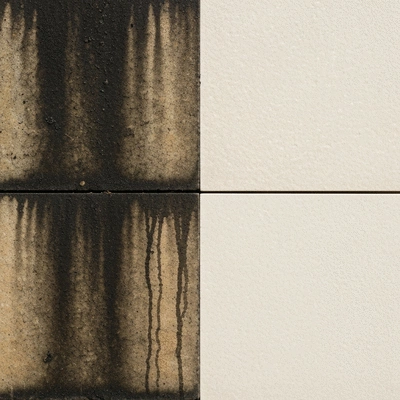
Moreover, sharing these images can inspire others in your community to take proper care of their stone as well!
Final Thoughts on Maintaining Stone Cladding
Maintaining stone cladding might seem daunting at times, but with the right approach, it can be an enjoyable part of homeownership. Remember, whether you’re going the DIY route or calling in the experts, understanding your options empowers you to protect your investment.
Creating a Cleaning Routine that Works for You: Balancing DIY and Professional Help
Finding a balance between maintaining your stone cladding yourself and hiring professionals is key. Consider creating a cleaning schedule that allows you to take care of minor issues while reserving the more complex tasks for the experts. This way, you ensure that your stone remains as beautiful as the day it was installed!
Encouraging Regular Inspections for Long-Lasting Beauty: Preventative Maintenance Tips
Regular inspections will help you catch potential problems before they escalate. I suggest checking your stone cladding at least twice a year, looking for any signs of wear, stains, or moisture issues. By staying proactive, you can ensure the lasting beauty of your stone cladding for years to come!
Recap of Key Points
Here is a quick recap of the important points discussed in the article:
- Understand Your Stone: Familiarize yourself with the characteristics of natural and manufactured stones to make informed decisions about your cladding.
- Choose the Right Cleaning Products: Use pH-neutral cleaners and non-abrasive tools to maintain the integrity of your stone surfaces.
- Establish a Cleaning Routine: Regular maintenance, including inspections and cleaning, will prolong the beauty and durability of your stone cladding.
- Know When to Call Professionals: Identify signs that indicate the need for professional cleaning services, such as persistent stains or structural issues.
- Consider Eco-Friendly Options: Opt for sustainable cleaning products that are safe for both your stone and the environment to enhance your cleaning routine.
Frequently Asked Questions About Stone Cladding Cleaning
- What is the main difference between natural and manufactured stone cladding?
- Natural stone cladding offers unique textures and durability but may require more maintenance due to its porous nature. Manufactured stone is engineered for consistency, is often lighter, and generally easier to maintain, often mimicking natural materials at a lower cost.
- Why is it important to use pH-neutral cleaners on stone surfaces?
- Using pH-neutral cleaners is crucial because harsh chemicals can cause discoloration, etching, or degradation to the natural properties of stone over time. pH-neutral formulas clean effectively without damaging the stone's integrity.
- How often should I clean my stone cladding?
- The frequency of cleaning depends on the type of stone (porous vs. non-porous), its location, and exposure to dirt and elements. Regular inspections at least twice a year are recommended, with cleaning as needed to prevent build-up and stains.
- When should I consider hiring professional cleaning services for my stone cladding?
- You should consider professional help for persistent stains that DIY methods can't remove, large areas of dirt buildup requiring specialized equipment, structural issues like loose stones or cracks, or high, hard-to-reach areas that need thorough cleaning.
- Are eco-friendly cleaning solutions as effective as traditional cleaners?
- Yes, many eco-friendly cleaning solutions are just as effective as traditional cleaners for stone cladding. They are designed to be safe for both your stone surfaces and the environment, offering benefits like enhanced safety for families and pets, and a reduced risk of stone damage from harsh chemicals.

